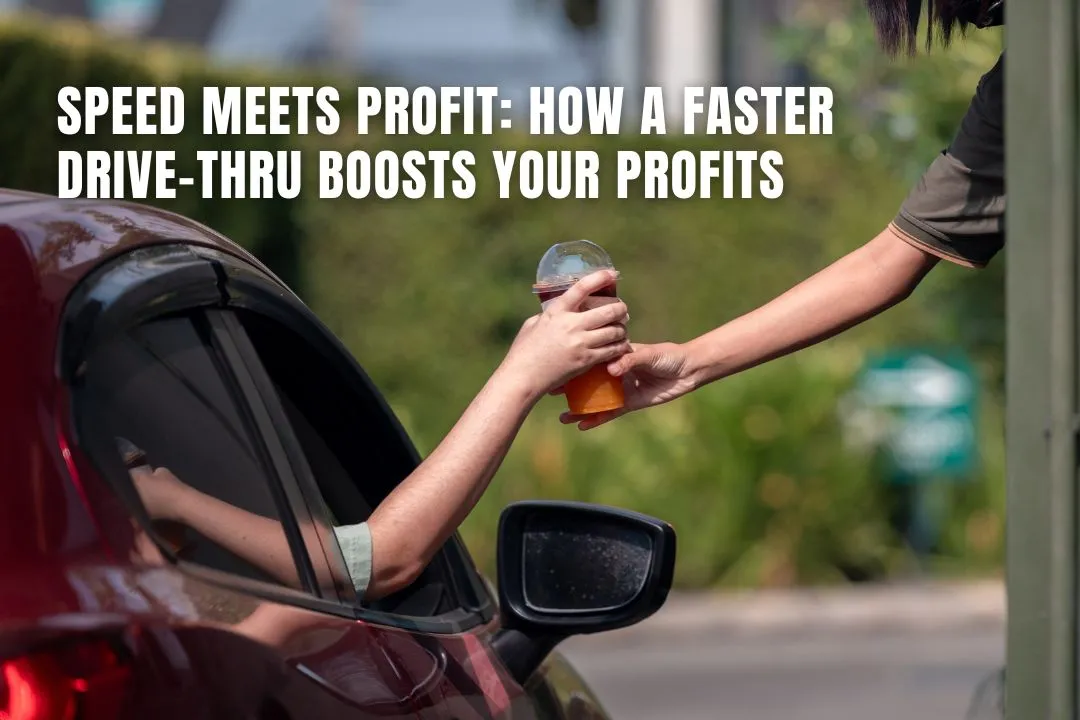Speed Meets Profit: How A Faster Drive-Thru Boosts Your Profits
June 11, 2025

Quick service restaurants rely heavily on the drive-thru. For many, it generates the bulk of daily transactions. Speed is no longer just a convenience. It is directly tied to how much revenue a location can bring in. As customer expectations for efficiency increase, improving the drive-thru experience becomes a key strategy for growth. Long wait times drive customers away, while fast service encourages repeat visits and builds loyalty.
Key Takeaways on Boosting Your Profits with a Faster Drive-Thru
- Speed influences profitability: A faster drive-thru directly increases transaction volume, translating into higher daily revenue for quick service restaurants.
- Customer satisfaction starts with speed: Quick service boosts retention, as customers associate fast experiences with value and are more likely to return.
- Efficiency prevents traffic issues: Reducing wait times keeps the line moving, avoids backups, and improves both safety and customer perception.
- Faster service doesn’t need expansion: Improving drive-thru speed can significantly increase throughput without requiring more space or additional staffing.
- Technology reduces friction: Automation and smart systems streamline the ordering process, cut down human error, and create a smoother kitchen-to-window flow.
- Data drives smarter decisions: Real-time insights into service performance help managers pinpoint issues and make informed adjustments to operations.
- Speed supports long-term growth: Optimizing drive-thru processes creates a lasting competitive edge and drives consistent profitability across all locations.
Register Your LLC
Company Registration
START NOWCustomer Retention Starts with Speed
A fast drive-thru experience leads to higher customer satisfaction. Patrons who get their meals quickly are more likely to return. They remember the speed as part of the value they received. This is especially important during peak hours, where every second saved keeps the line moving and customers engaged. Reducing bottlenecks and keeping cars from backing up into the street or lot improves safety, customer perception, and overall traffic flow within the property during high-demand periods.
Increased Volume Without Expanding Footprint
Faster drive-thru service allows restaurants to process more orders in less time. This higher transaction volume translates directly into higher revenue. Improving speed does not always mean hiring more staff or enlarging the building. It often means identifying inefficiencies and investing in technology or better process flow. Every extra minute per car adds up to missed opportunities. Reducing that time increases throughput and allows the location to serve more customers without physical expansion.
Technology Drives Efficiency
The use of technology plays a major role in speeding up service. Modern systems reduce human error, streamline ordering, and improve kitchen communication. Automated order takers, real-time kitchen tracking, and menu boards that adjust based on the time of the day help keep things moving. Automatic drive-thru windows reduce the number of steps employees must take, saving time and reducing fatigue. This small adjustment supports a smoother workflow, especially during high-volume periods.
Better Metrics Lead to Better Decisions
Faster service times allow for better operational data. Managers can measure throughput, peak hour performance, and order accuracy in real time. This visibility helps guide decisions about staffing, training, and promotions. For example, if data shows a dip in speed during certain shifts, management can identify whether it’s a staffing shortage, an equipment issue, or a process breakdown. Over time, this leads to lower operating costs and higher profit margins.
A Strategic Investment in Long-Term Growth
Speed improvements are not just for short-term boosts. They build the foundation for lasting success. A well-optimized drive-thru becomes a competitive advantage, allowing the business to stand out in a crowded market. Whether a brand has one location or hundreds, streamlining the drive-thru process makes each site more productive and profitable.
Improving drive-thru speed impacts far more than customer satisfaction. It affects sales, efficiency, labor performance, and overall profitability. As more consumers seek convenience, speed becomes a differentiator that shapes the future of food service. Strategic improvements can help deliver the service that today’s customers demand along with the financial results that businesses need. For more information, feel free to look over the accompanying infographic below.


